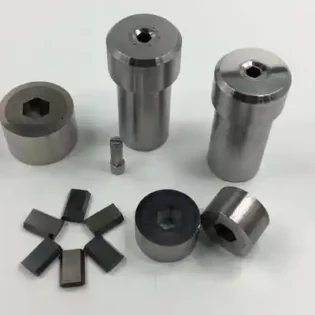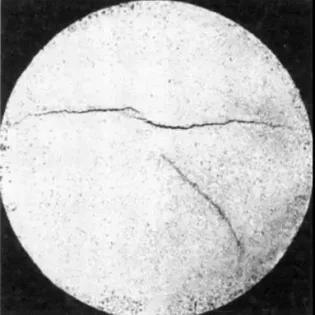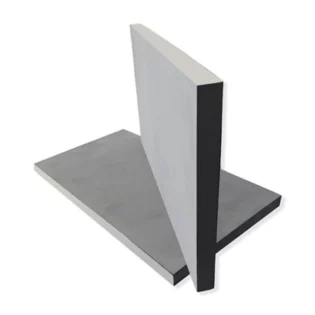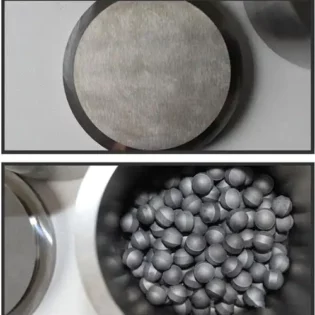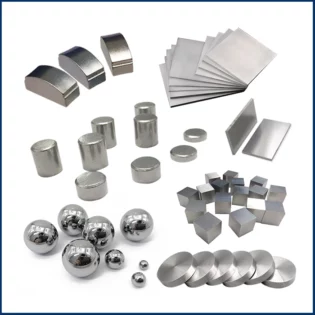Non metallic inclusions mainly come from various types of non-metallic inclusion compounds formed by the corresponding increase of the compound equilibrium constants of oxygen, sulfur and nitrogen during the condensation of liquid steel. The product formed according to the chemical reaction shall be called non-metallic inclusions, or inclusions for short. Although the amount of inclusions in steel is small, it has a bad impact on the quality of steel materials and products. With the development of modern material engineering technology, the requirements for steel quality are becoming more and more strict. Therefore, in-depth discussion and Research on non-metallic inclusions will be of great significance to material identification, product fracture analysis, waste analysis and failure analysis.
Sources of nonmetallic inclusions in steel
The formation of inclusions is mainly due to a series of physical and chemical reactions during melting and solidification. According to their sources, they can be divided into endogenous (internal) inclusions and exogenous (external) inclusions.

Endogenous inclusion
Endogenous inclusions refer to the products generated by the chemical reaction caused by the contact between various internal material components, or between the steel and the atmosphere and container in the furnace during the smelting, casting and condensation of steel, or the granular substances precipitated due to the decrease of solubility when the condensation temperature of liquid steel decreases.
Foreign inclusion
Foreign inclusions are also called external inclusions or accidental inclusions. It is the impurity mixed into the molten steel due to peeling off from the equipment or container in the process of smelting and casting production. In addition, sometimes due to the negligence of smelting operation, the refractory brick cracks and falls off due to thermal impact, forming products with other oxides and becoming foreign inclusions.
Effect of inclusions on steel quality
The harmfulness of inclusions depends on their quantity, shape, size, distribution, melting point and physical and chemical properties. When the inclusion has the property of low melting point, the steel will produce thermal brittleness and crack due to its melting or softening during hot working deformation. When there are aluminum inclusions or other nitrides in the steel, the surface hardness of the steel is uneven, resulting in difficulties in cold machining, cutting and grinding. When the inclusions in steel have exceeded the standard, it brings great difficulties to heat treatment and welding process, such as uneven infiltration layer of chemical heat treatment, greatly reducing the strength or cracking of weldments during welding, etc.
Metallographic identification of inclusions
In addition to the identification of the chemical composition and crystal structure of inclusions, the metallographic identification method can directly observe and identify the morphology, size, quantity, distribution and type of inclusions under the optical metallographic microscope. At the same time, the metallographic method also has the characteristics of simple operation and easy implementation.
Interception and preparation of metallographic samples
In order to ensure that the intercepted sample can represent the results of identifying non-metallic inclusions, the intercepted part shall meet the requirements of corresponding technical conditions. For the forging blank, samples can be taken from the center to the edge of the forging blank, such as the head, middle and tail of the forging blank; For rolled and cold drawn steel, it is appropriate to sample longitudinally through the center line; For quenching crack, forging crack, hot rolling, stamping, failure fatigue fracture, etc., samples shall be intercepted at the crack and fracture; For special steel or product parts, it can be carried out according to corresponding standards.
The metallographic sandpaper from coarse to fine shall be used in the grinding of the sample. The next grinding process shall be perpendicular to the grinding mark of the previous grinding process until the grinding mark disappears. In the polishing process, use appropriate pressure to make the polishing surface of the sample move back and forth at the radius of the polishing disc, and the sample itself should also rotate continuously. Finally, it is required that the sample is not etched in the 100 times field of view, and its surface is free of scratch, peeling, water mark, stain, flat and bright as a mirror.
Type and morphology of inclusions
Sulfides have high ductility, single gray inclusions with a wide range of morphology ratio (length / width), and generally have rounded ends; Most alumina particles are not deformed, angular, with small morphology ratio (generally < 3), and black or blue particles are arranged in a row along the rolling direction (at least three particles); Silicates have high ductility, single black or dark gray inclusions with a wide range of morphology ratio (generally ≥ 3), and generally have acute angles at the ends; Spherical oxides are undeformed, angular or circular, with small morphology ratio (generally < 3), black or blue, irregularly distributed particles; The shape of single particle spherical is circular or approximately circular, and the diameter is ≥ 13 μ M.

